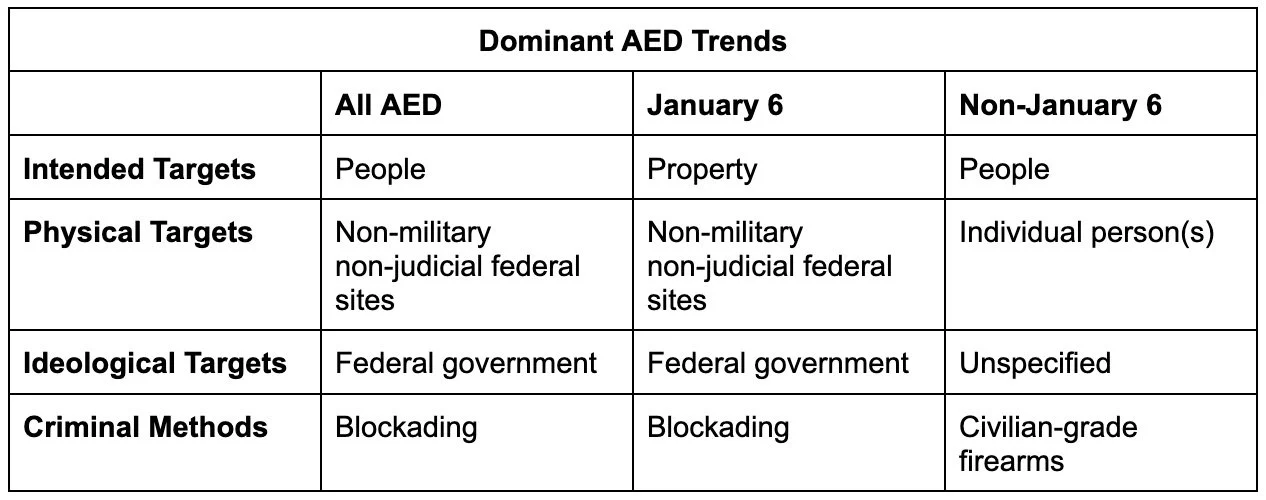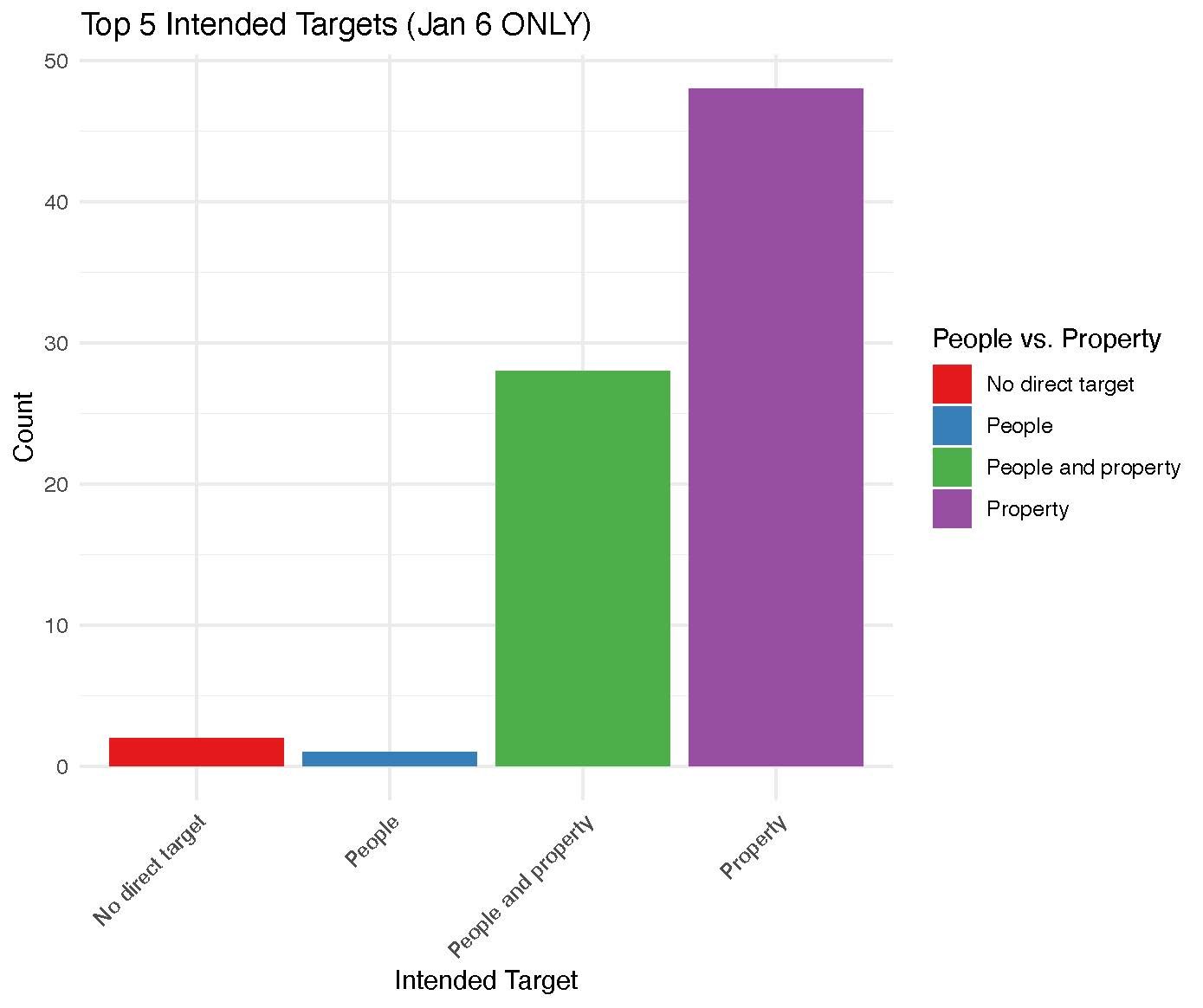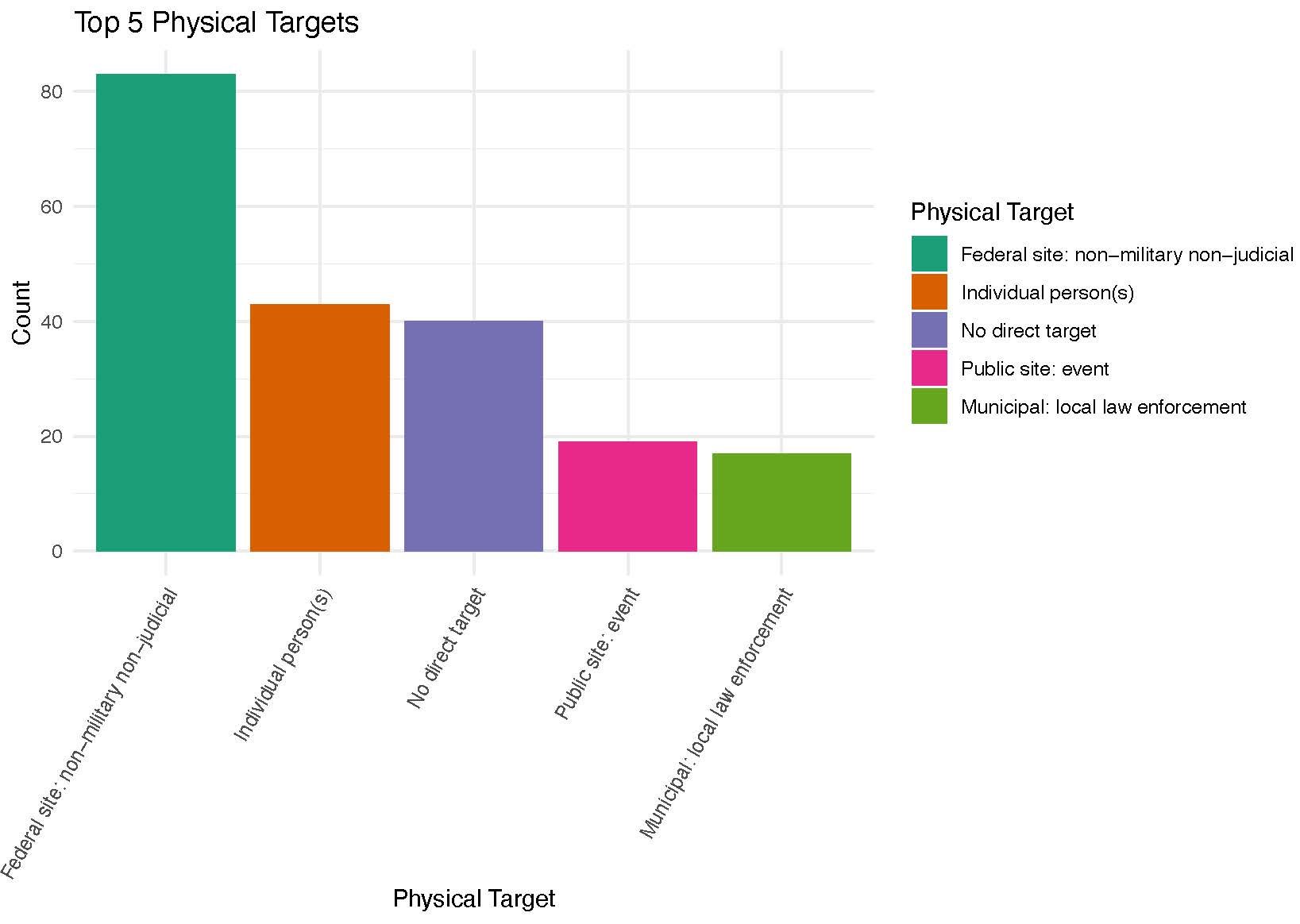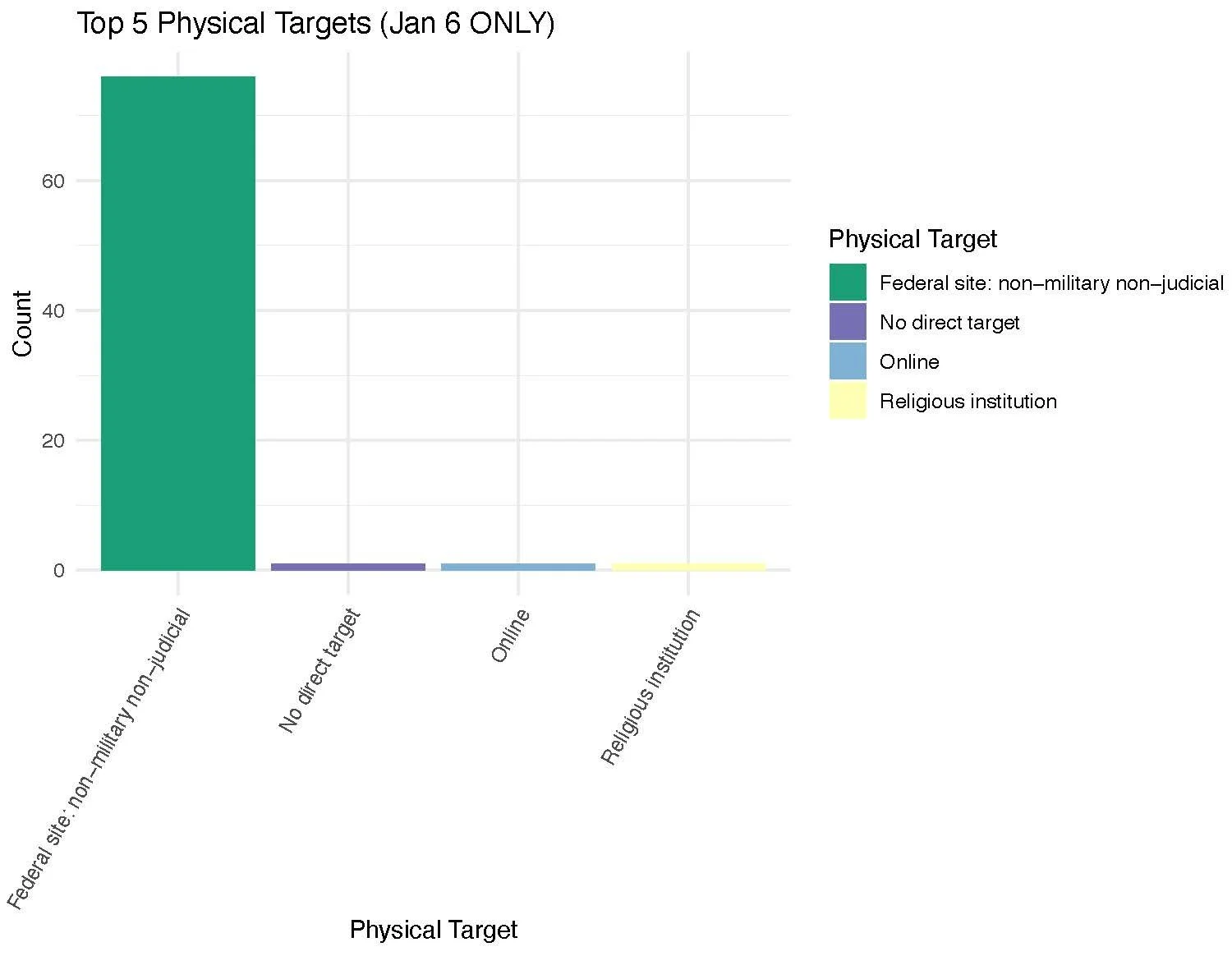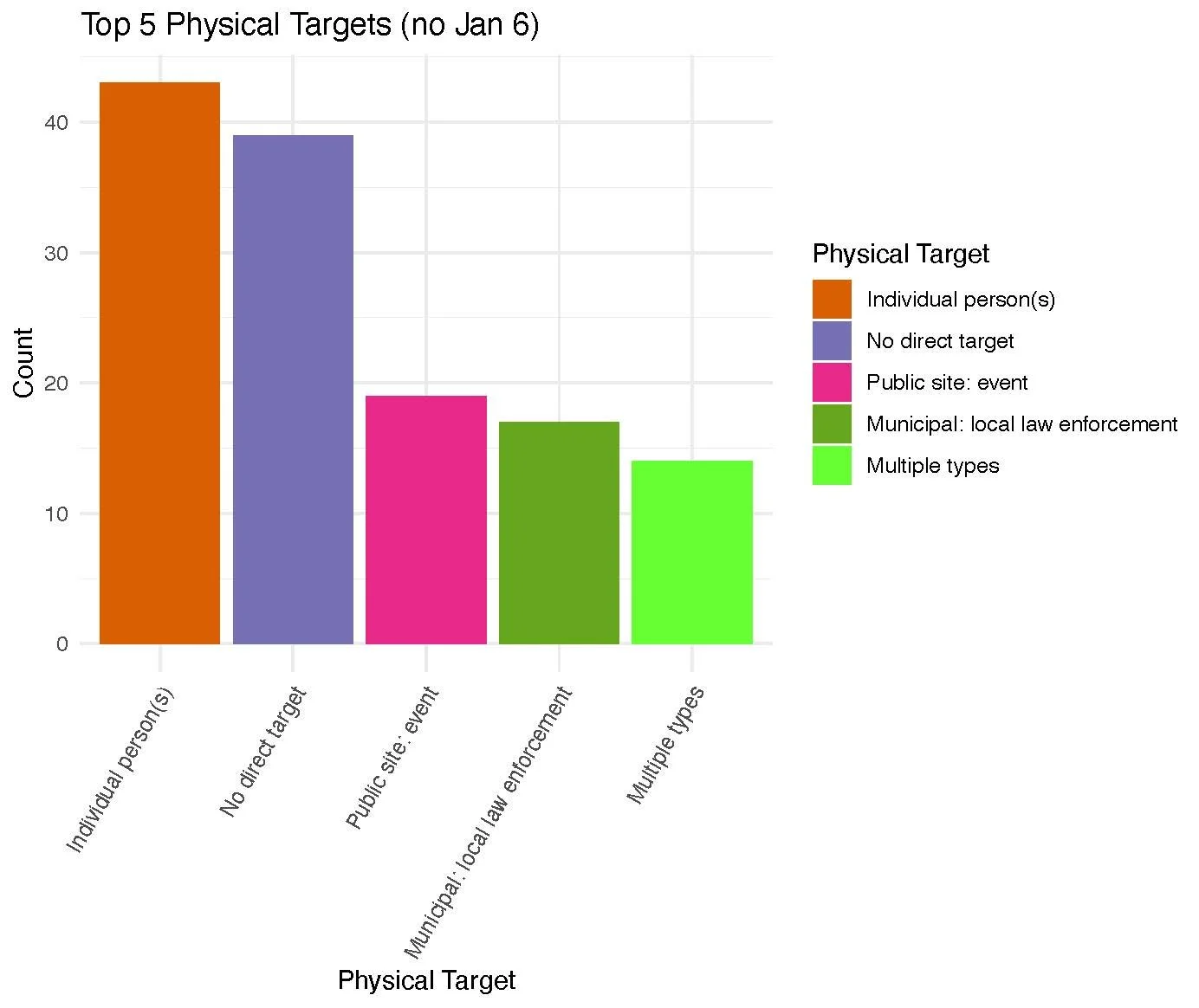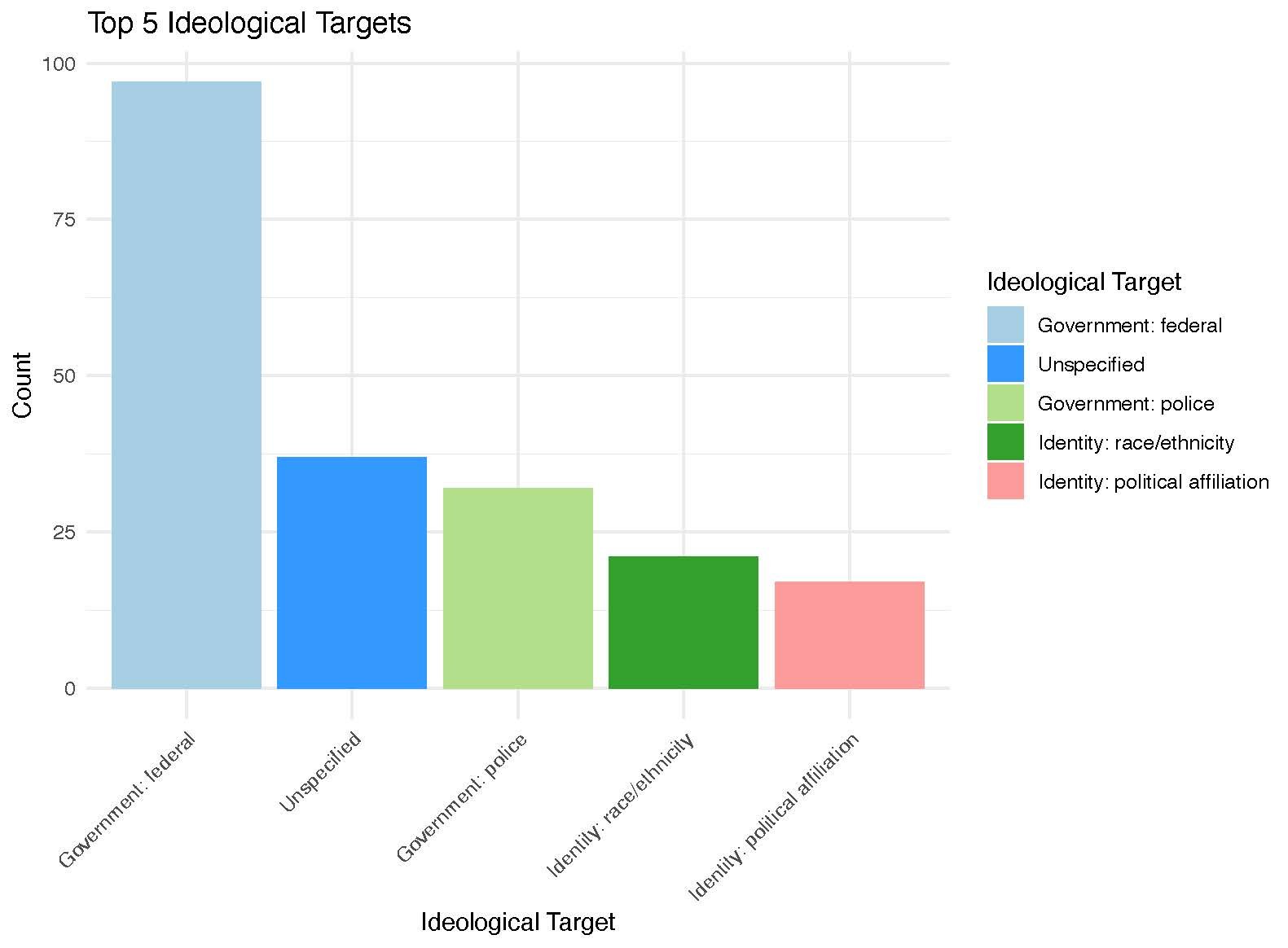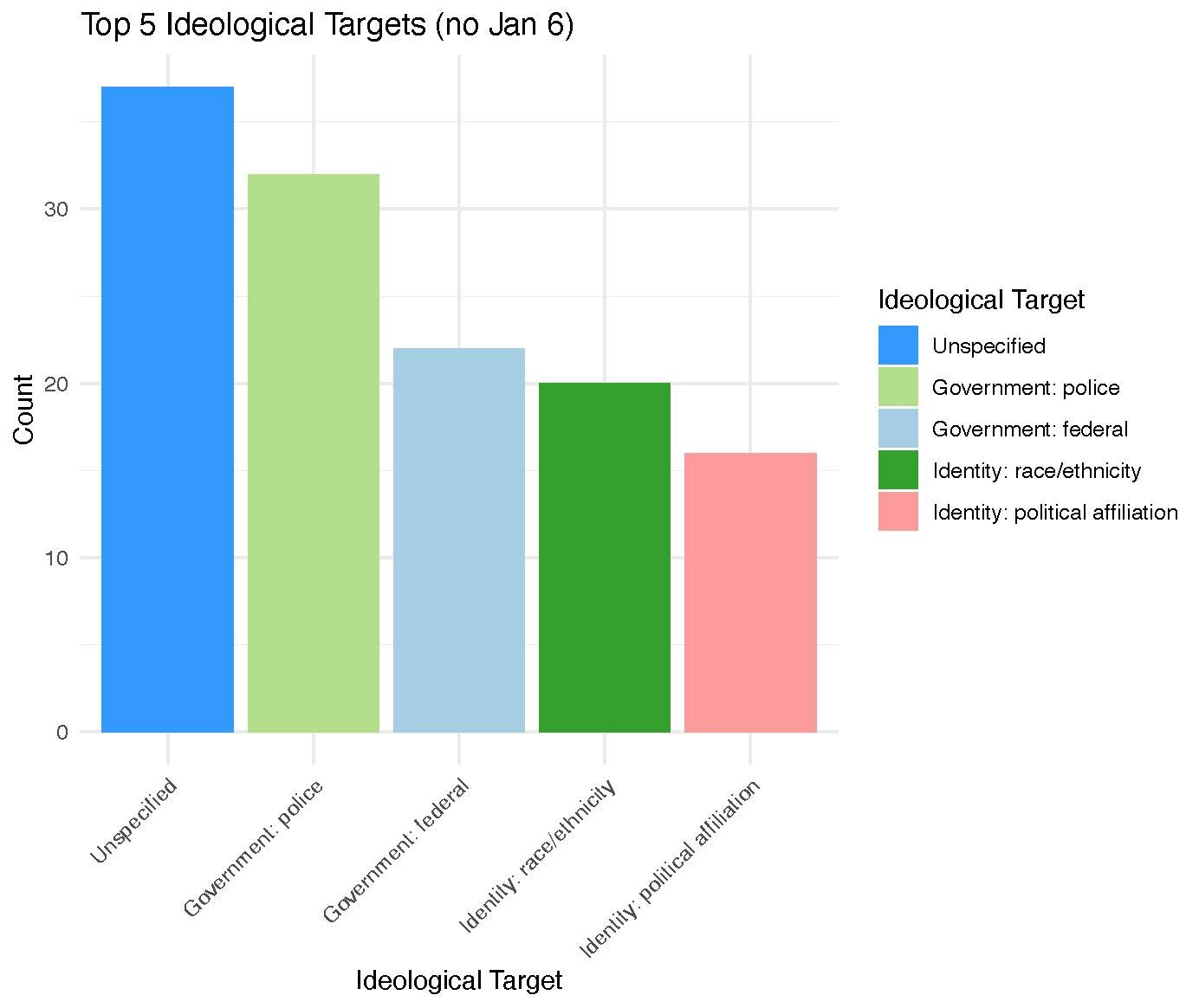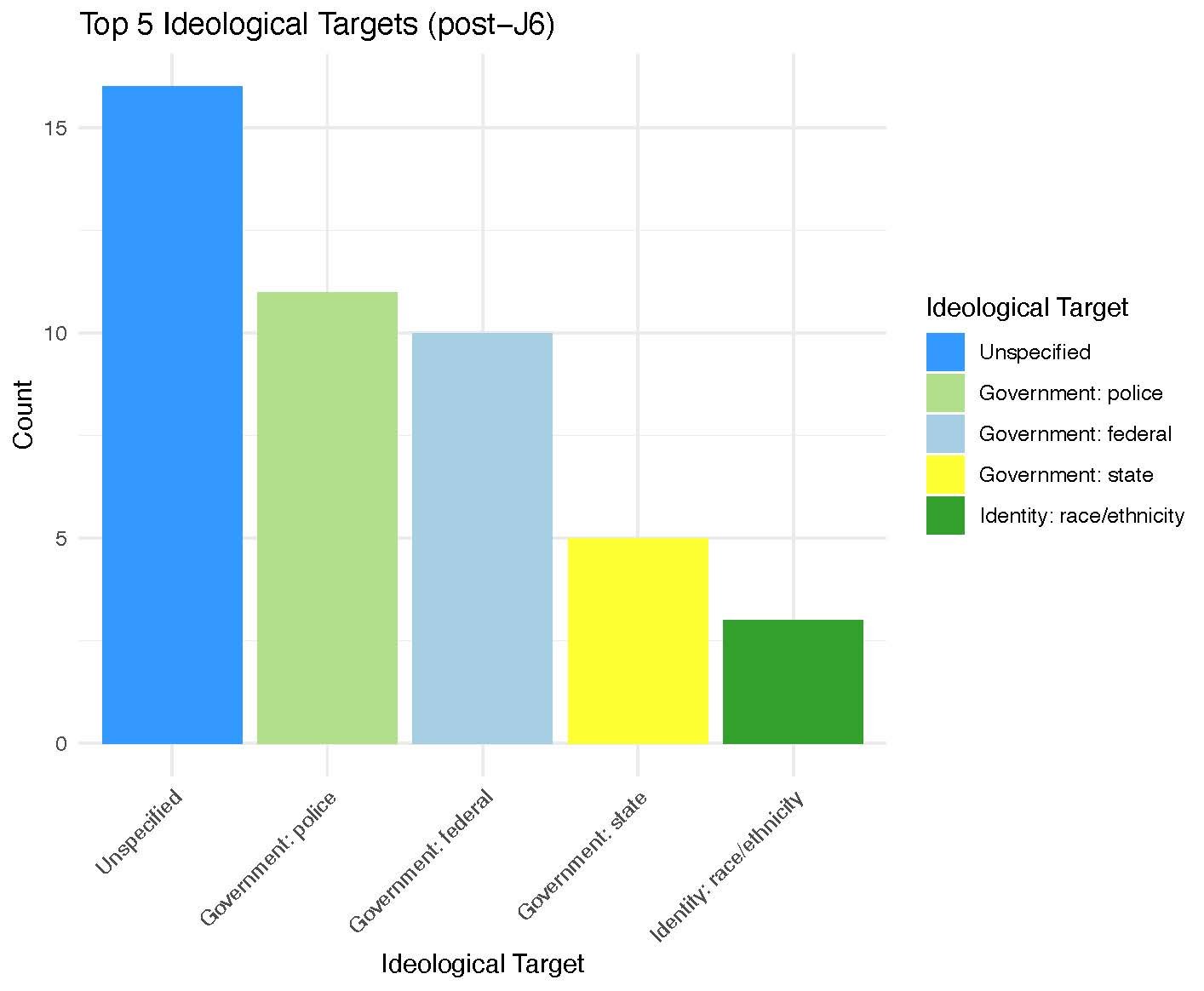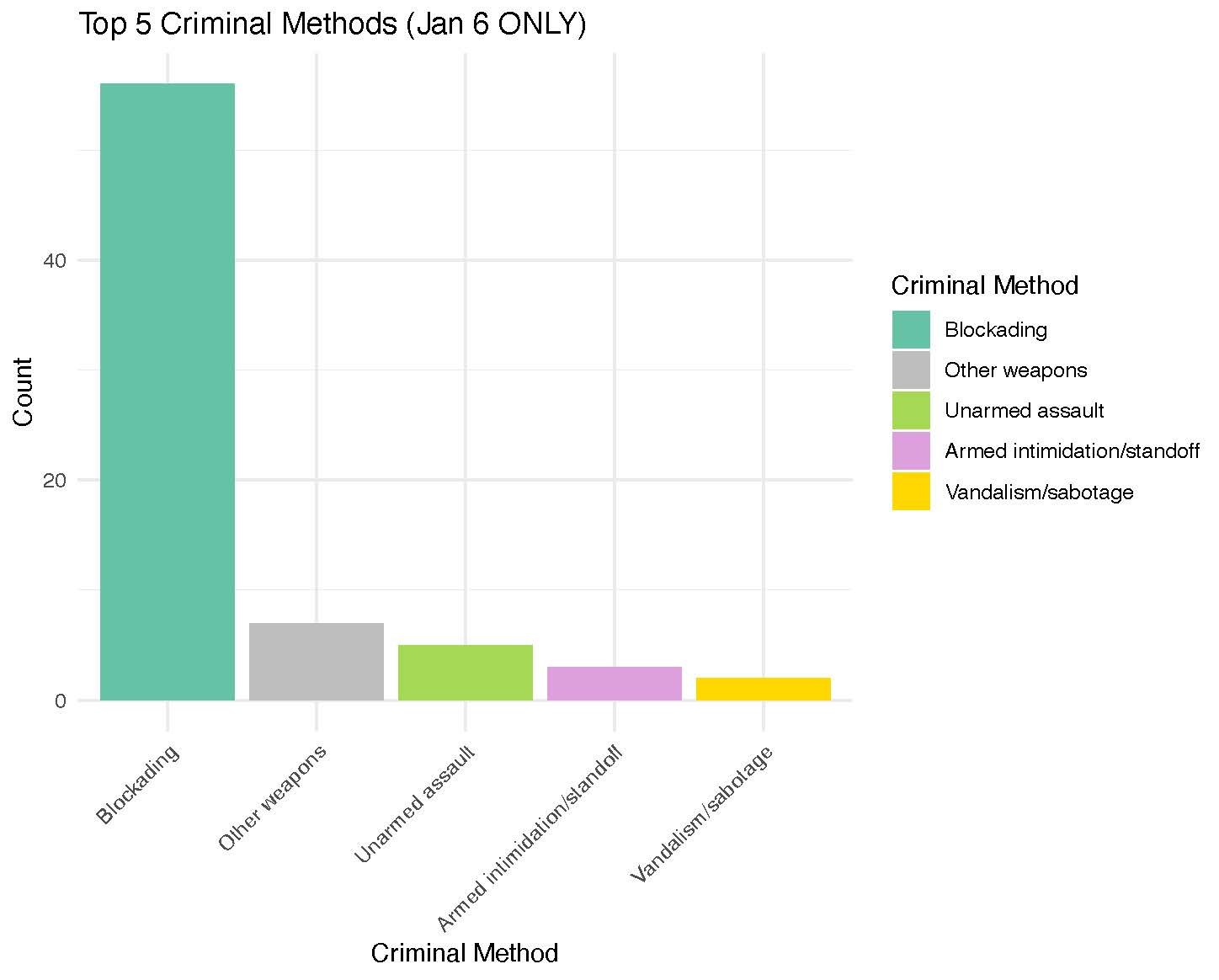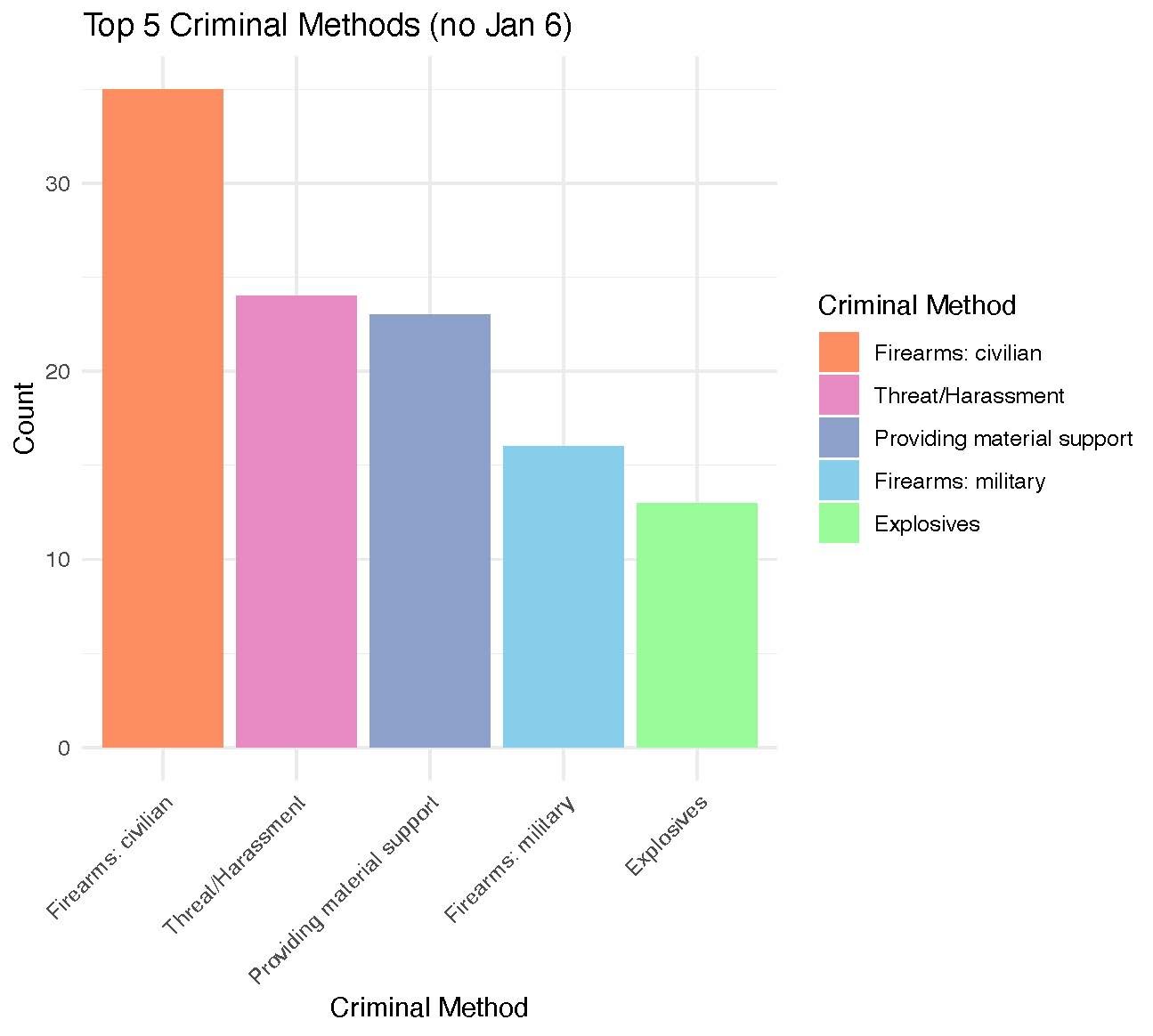The Accelerationism Events Dataset: Tactics, Techniques & Procedures
Mary Bennett Doty
——
This essay is the second contribution in a multi-part series of the analytical exploration of the newly launched Accelerationism Events Dataset (AED), which captures events of far-right militant accelerationism and proto-accelerationism from 1990 through November 2023. Specifically honing in on the tactics, techniques, and procedures (TTPs) seen throughout the 265 cases that comprise the AED, this essay identifies key features of accelerationist felonies committed since the late 20th century.
Methodology & Vernacular
As elaborated in the introductory piece published earlier this year, researchers began collecting event data in July 2023 and completed final data coding in November. During these five months, approximately 300 cases were identified that featured accelerationist actors. After systematic review and exclusion of a small number of cases, the process yielded 290 initial cases. After additional phases of inclusion consideration, a final dataset of 265 cases was identified. The dataset includes 20 cases occurring during the Summer 2020 wave of racial justice protests and 79 cases occurring during the 2021 attack on the US Capitol.
For the purposes of this report, the TTPs assessed in each case include the intended target (the who or what), the physical target (the where), and the ideological target (the why), as well as the criminal method(s) affiliated with each felony.
To determine the dominant intended targets of accelerationist cases, we divided the AED data into five categories: No direct target (e.g., bank robbery, providing material support), People, People and property, Property, and Unspecified/unknown/undeveloped. Given accelerationists’ fundamental focus on grievances related to anti-government sentiment, it was important to consider both individuals targeted (such as law enforcement officers or public officials), as well as property (such as federal judicial buildings). Additionally, we conducted a deep-dive into the specific physical targets involved in the AED cases (e.g., whether or not the property was public or private, or state, federal, or municipal, etc.).
It was important for our team to identify the primary ideological targets involved in AED cases ––the characteristics of the target that motivated the defendant to commit the specific crime –– whether the target was affiliated (or presumed to have a connection) with the US government, connected to a particular identity-based community (e.g., race/ethnicity, nationality, sexuality/gender, political affiliation), or was affiliated with multiple or unknown characteristics that were key motivating factors for the defendant.
Lastly, we documented the criminal methods, or the means through which AED defendants carried out their crime(s), of the AED. Five dominant tactics were present across the dataset:
Blockading (e.g., unarmed civil disobedience, participating in a protest without carrying out vandalism or assault),
Firearms (civilian) (e.g., small arms or personal firearms, firearm possession, sales and manufacturing, modification, transport, importation),
Providing material support (e.g., racketeering, drug sales, financial fraud),
Threat/Harassment (e.g., doxxing, swatting), and
Unarmed assault (e.g., punching, spitting on someone, etc.).
To learn more about the specific variables of each aforementioned category, check out the Prosecution Project’s codebook here.
Research Focus & Considerations
Given the aforementioned definitions, this piece seeks to identify the primary targets in these cases and their affiliated criminal methods. The data below highlights high-level trends for all AED cases and also data visualizations that break apart:
Cases only related to the January 6, 2021, insurrection at the US Capitol (currently capturing 79 cases), and
All other AED cases, in an effort to prevent significant skews in the overarching data created by the insurrection.
Lastly, it is important to note that while over 90% of the cases identified in AED occurred between 2016 and 2023, 9% (24 cases) occurred prior to 2015, which, as defined in the introduction to this series, was a period wherein these “neo-fascist, proto-accelerationist groups adopted many of the tactics, techniques, and rhetorics seen in contemporary accelerationism, though they emerged prior to the framework’s identification and naming.”
Results
People are the primary intended targets of all non-January 6 cases (89 out of 186, or 48%), and all AED cases as a whole (90 out of 265 cases, or 34%), but Property was the dominant intended target on January 6, 2021, at the US Capitol (48 out of 79, or 61%).
January 6-specific cases unsurprisingly targeted non-military, non-judicial federal sites (i.e., the US Capitol) (76 out of 79, or 96%), thus, AED data overall complements this heavy skew (83 out of 265, or 31%). However, when excluding January 6 cases from the data, Individual person(s) were the primary target (43 out of 186, or 23%). It should also be noted that non-military, non-judicial federal sites were not one of the top five physical targets for non-January 6 cases.
Cases across AED data reveal that there are three ever-present ideological targets involved in accelerationist cases: grievances against the federal government (12% of non-January 6 cases, 37% of all AED cases, and 95% of all January 6 cases), identity-based grievances involving race and ethnicity, and those stemming from political affiliation.
Non-January 6 criminal methods appear to be more violent than those used during the Capitol riot. Whereas non-January 6 methods tended to involve firearms (either civilian- or military-grade), explosives, and threats and harassment, events related to January 6 and the overarching AED data involve more unarmed activity, including blockading and unarmed assault.
Dominant Intended Target
The overarching AED data (Figure 1) illustrates that the primary intended targets for all AED cases (including January 6) are People, followed closely by Property, People and property, and No direct target, respectively. This trend is reflected in recent accelerationist crimes and scholars’ understanding of these actors, as these anti-democratic actors seek to exacerbate institutional vulnerabilities, primarily through the targeting of officials and buildings.
Figure 1: Intended Targets for All AED Cases
When only considering primary targets involved on January 6, 2021, at the US Capitol (Figure 2), Property was the clear dominating intended target, followed by People and Property, with very few cases involving People or No direct target. This should not come as much of a surprise, given the key motivations involved on January 6, where insurrectionists’ core goal was to take hold of the US Capitol and fend off any law enforcement personnel or public officials on that day.
Figure 2: Intended Targets for January 6 Cases Only
When removing January 6 defendants from the data (Figure 3), People are the dominant intended target, which is a complementary trend of the overarching AED data in Figure 1. However, unlike the other two data visuals above, non-January 6 cases have more indirectly intended targets than Property and People and Property, respectively.
Figure 3: Intended Targets Excluding January 6 Cases
Dominant Physical Target
As seen in Figure 4 below, non-military and non-judicial federal sites, such as the White House and US Capitol, are the clear primary physical targets for all actors captured from 1990 to January 2024 in the AED. This trend should not be surprising, given the representation of January 6th actors in Figure 4.
Figure 4: Physical Targets for all AED Cases
When taking a closer look at January 6, specifically (Figure 5), it is clear that data from January 6 cases skew the overarching AED data above in Figure 4.
Figure 5: Physical Targets for January 6 Events, Only
Figure 6 illustrates that when excluding January 6 defendants and their felonies, Individual person(s) are the primary physical target for all other crimes in the AED database. Further, the only physical target that Figures 5 and 6 share is No direct target, making it clear that physical targets involved on January 6, 2021 by these actors are outliers when compared to the rest of the AED.
Figure 6: Physical Targets Excluding January 6 Cases
Dominant Ideological Target
AED defendants’ ideological targets across the three compartmentalizations of AED data share three primary targets: Government: federal, Identity: race/ethnicity, and Identity: political affiliation. However, the leading outlier for all AED cases (Figure 7) seems to be skewed by cases from January 6, 2021, given that the events of January 6 (Figure 8) were clearly motivated by grievances against the federal government.
Figure 7: Ideological Targets for All AED Cases
Figure 8: Ideological Targets for January 6 Cases, Only
When removing January 6 cases from the data, grievances against the federal government are only the third most dominant ideological target, preceded by Unspecified and Government: police grievances, respectively.
Figure 9: Ideological Targets Excluding January 6 Cases
In an effort to better understand the “why” of these cases, we also considered ideological targets of all non-January 6 felonies in the time period following the January 6 insurrection, in order to identify whether defendants and their affiliated crimes appeared to have been motivated or deterred by the insurrection. As shown in Figure 10 below, the three most dominant ideological targets have not changed, however, crimes motivated by state governments seem to have increased and grievances involving race and ethnicity are still present post-January 6.
Figure 10: Ideological Targets for Cases After January 6 (Jan 6 Cases Excluded)
Dominant Criminal Methods
As shown below, Blockading was the dominant criminal method for not only AED as a whole (Figure 11), but also for January 6-specific cases (Figure 12). However, blockading appears to have been the only significant skewing variable between January 6 cases and the rest of the felonies included in the dataset. The second-most dominant criminal method in Figure 11 is civilian firearms (which are not included in January 6-specific cases).
Figure 11: Criminal Methods for All AED Cases
Figure 12: Criminal Methods for January 6 Cases, Only
Another important differentiation between January 6-specific data and non-January 6 data is the use of firearms and other weaponry present in non-January 6 cases (Figure 13), compared to primarily unarmed criminal methods during the insurrection at the US Capitol (Figure 12), aside from when firearms were used as intimidation tactics, likely due to Washington, DC’s gun laws being “some of the strongest gun laws in the country.”
Figure 13: Criminal Methods Excluding January 6 Cases
Ultimately, while January 6, 2021, was a historic outlier for many reasons, there were consistent trends across all accelerationist cases, namely:
The majority of accelerationist actors target either people or property, not both simultaneously.
A typical case resembles that of Christopher Hassan, a former officer in the Coast Guard. In January 2020, Hassan, who self-identifies as a white nationalist, was sentenced to over thirteen years in prison for stockpiling weapons in an effort to "murder innocent civilians on a scale rarely seen in this country" and “cause complete destruction" by “unleashing a biological attack on the public, followed by contamination of food supplies.” Accelerationist-linked materials such as Anders Breivik’s manifesto were also found at Hassan’s residence.
The majority of accelerationists are primarily motivated by either grievances against the government (federal, state, or law enforcement), or maintain identity-based grievances involving race/ethnicity, or political affiliation.
Looking at cases motivated by anti-government grievances, we see defendants like William Todd Wilson, a member of the Oath Keepers, an anti-government extremist group, who pled guilty to a charge of seditious conspiracy and agreed to cooperate with the government's investigation into the attack on the U.S. Capitol. Wilson was a county-level leader of the Oath Keepers based in North Carolina, and he conspired with other members of the group to "oppose by force the lawful transfer of presidential power," according to a statement of offense Wilson signed and submitted in federal court as part of his guilty plea.
The dominant criminal methods differ across the three different compartmentalizations of AED data, with methods on January 6, 2021, seemingly less violent than the rest of the data, likely due to DC’s aforementioned strong gun laws.
A typical non-January 6th case looks similar to that of Conor Climo, a member of the Feuerkrieg Division (FKD), pled guilty in February 2020 to illegal possession of an unregistered firearm after being caught admitting to an FBI source that he planned to “firebomb a Las Vegas synagogue and attack a Las Vegas LGBTQ+ bar.” Climo expressed his hatred towards Black, Jewish, and LGBTQ+ people and asserted that he joined FKD because it “offered him glory and the ability to contribute his knowledge of constructing explosive devices toward a ‘righteous’ cause.”
Conclusion
This is the first piece exploring the data patterns of the AED. The next publication to follow will focus on the demographic patterns, and will be later supported by publications that will dive into the temporal and geographic trends of criminal defendants, defendants’ group affiliation and ideological orientations, and the legal outcomes and processes of criminal cases.
Mary Bennett Doty is a Senior Research Specialist at Princeton University’s Bridging Divides Initiative, as well as a Senior Coder with the Prosecution Project. Mary Bennett’s research focuses on the monitoring and mitigation of offline manifestations of political violence. The views expressed are those of the author and do not reflect the views of her employer.
This report is part of a multi-publication series led by Dr. Michael Loadenthal, and supported by research conducted by Samantha Fagone, Grace Stewart, Olivia Thomas, and Bella Tuffias-Mora.
To check out the introduction to this series, read Dr. Loadenthal’s piece here.

